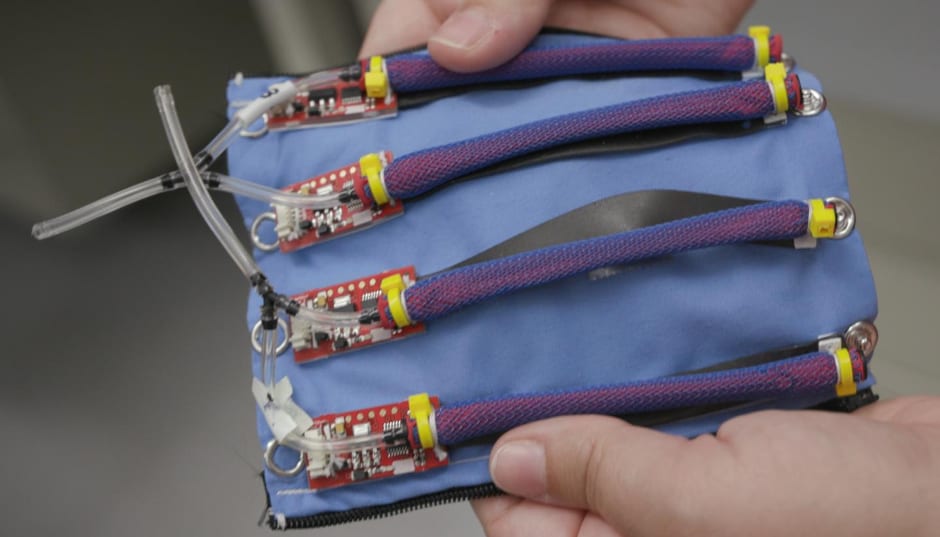
Developed in the lab of Rebecca Kramer-Bottiglio, assistant professor of mechanical engineering & materials science at Yale University, robotic skins enable users to design their own robotic systems. The results of the team's work are published today in Science Robotics.
The skins are said to be made from elastic sheets embedded with sensors and actuators developed in Kramer-Bottiglio's lab. Placed on a deformable object the skins animate these objects from their surfaces. According to Yale, the makeshift robots can perform different tasks depending on the properties of the soft objects and how the skins are applied.
"We can take the skins and wrap them around one object to perform a task - locomotion, for example - and then take them off and put them on a different object to perform a different task, such as grasping and moving an object," she said. "We can then take those same skins off that object and put them on a shirt to make an active wearable device."
Robots are typically built for a single purpose but the robotic skins allow users to create ad hoc multi-functional robots that can be used in settings that hadn't been considered when they were designed, said Kramer-Bottiglio.
Additionally, using more than one skin at a time allows for more complex movements. Kramer-Bottiglio said the skins can be layered to get different types of motion. "Now we can get combined modes of actuation - for example, simultaneous compression and bending."
The researchers created a handful of prototypes to demonstrate their robotic skins, including foam cylinders that move like an inchworm, a shirt-like wearable device designed to correct poor posture, and a device with a gripper that can grasp and move objects.
Kramer-Bottiglio came up with the idea for the devices when NASA put out a call for soft robotic systems. The technology was designed in partnership with NASA, and its multifunctional and reusable nature would allow astronauts to accomplish an array of tasks with the same reconfigurable material. The same skins used to make a robotic arm out of a piece of foam could be removed and applied to create a soft Mars rover that can roll over rough terrain. With the robotic skins on board, the Yale scientist said, anything from balloons to balls of crumpled paper could potentially be made into a robot with a purpose.
"One of the main things I considered was the importance of multifunctionality, especially for deep space exploration where the environment is unpredictable," she said. "The question is: How do you prepare for the unknown unknowns?





Nanogenerator consumes CO2 to generate electricity
Whoopee, they've solved how to keep a light on but not a lot else.